BeadBuster makes the world’s best portable tire bead breakers and tools for the DIY and professional mechanic, race team, and farmer. BeadBuster works great on ATV’s, motorcycles, cars, 4×4 trucks, tractors, lawn mowers and even light aircraft. Now you can easily change your own tires at home or on the trail. Work less, ride more, and save money with BeadBuster’s tire change tools.
BeadBuster was founded by a pair of avid Powersports enthusiasts and DIY mechanics who were frustrated with the current selection of manual tire changing hand tools/expensive dealership service charges for swapping tires on their ATV’s and adventure bikes. Knowing we could do it better, we designed the most affordable and effective bead breaker to date, the BeadBuster Bead Breaker. BeadBuster’s goal is designing the best possible portable bead breaking tools to easily change your tires at home or on the trail, that do the job properly and efficiently, every time. Our high-quality, Made-in-USA XB-45x BeadBuster series are easy to use and come in four different model specs to support the casual weekend trail rider, all the way up to professional race teams. Our Bead Breakers work with any size wheel and rim including ATV’s, adventure bikes, track cars, off-road trucks, farm tractors, and trailers. We stand behind the quality of our products and provide rock-solid warranties no matter what type of abuse you throw at them. Ride more and shop our online store for Bead Breakers, tire irons, tire changing hand tool, accessories, and full-line of spare parts.
We stand behind the quality of our products and provide rock-solid warranties no matter what type of abuse you throw at them. Ride more and shop our online store for Bead Breakers, tire irons, tire changing hand tool, accessories, and full-line of spare parts.
BeadBuster’s compact and lightweight motorcycle bead breakers make breaking the bead on any two wheeler a breeze. Our bead breakers are designed to work on every bike in your garage, from husky enduros and the orange team adventure bikes, all the way to cruisers and sportsters. Heavy Touring Bikes like the Honda Goldwing and BMW K1600 have really stubborn tire beads, but the BeadBuster bead breakers can deal with those just as easily.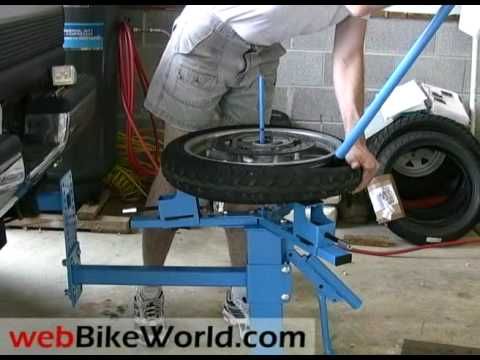 Our USA built XB-45x bead breaker range is easy to use, protects your spokes and rims from scratches, and is small enough to fit in your fender pack.
Our USA built XB-45x bead breaker range is easy to use, protects your spokes and rims from scratches, and is small enough to fit in your fender pack.
Will it work on my Bike? Yes! The XB-450 and XB-455 work on all motorcycle wheels including: Motocross, Enduro, Trials, Adventure / Dual Sport, Sport Bikes, Cruisers, Touring, Super Bikes.
ATV tires are some of the most difficult to change of any vehicle, and it was for this application that the BeadBuster was invented. The BeadBuster XB-45x series bead breakers are compact enough to take with you for those emergency tire changes on the trail or trail head…and it is powerful enough to break loose even the most stubborn, nasty, dry-rotted tire beads. BeadBuster has everything the ATV enthusiast needs for tire service on the trail, or at home in the garage.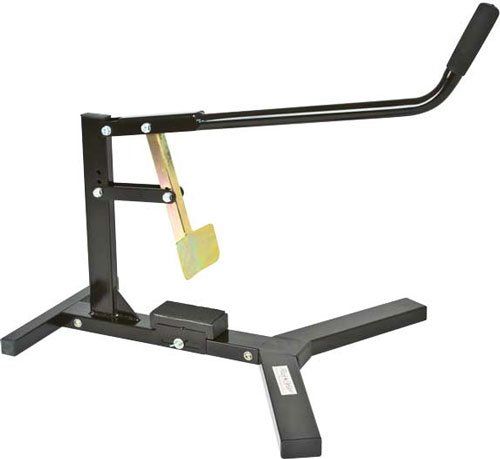
Will it work on my ATV? Yes! The XB-450, XB-455 & XB-451 work on all 7″&8″ mini-quad and 3-wheeler wheels with a separate spacer, and every other kind of ATV wheel >9″ including: Sport Quads, Utility Quads, Side by Sides (SxS), UTV’s, Amphibious 6 & 8 Wheeled vehicles.
You want to change your car tires yourself? The BeadBuster line of tire bead breakers have everything you need to get the job done. It doesn’t matter how big or wide or old the wheels are, the BeadBuster will make quick work of breaking the beads on your car tires.
Will it work on my Car? Yes! The XB-450 and XB-455 work on most passenger vehicle wheels. Certain cast alloy wheels have restrictive inside geometry and curvature that prevent the tool from clamping well, in which case a XB-452 will work well with these special-case wheels. Check out the info on the Help-Me-Choose page for more info.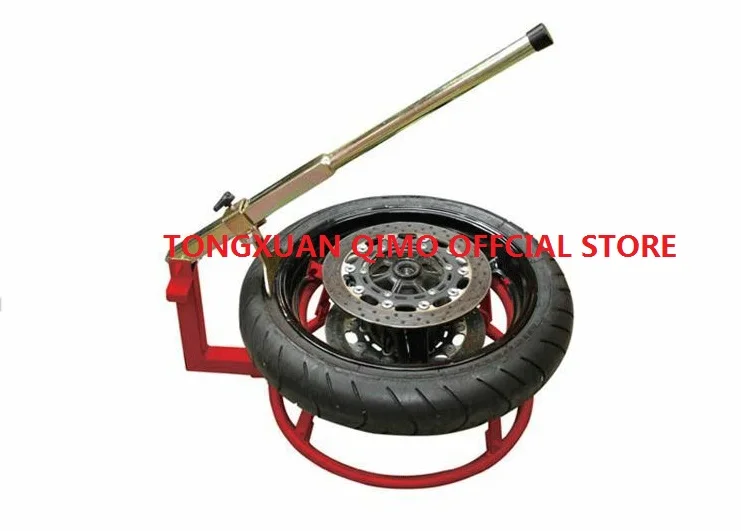
If you have a truck with big, chubby off-road tires…you’ve probably run into more than one tire shops that said their equipment wasn’t big enough to handle your tires. Now you can change those tire by yourself, at home, at your convenience…BeadBuster makes the job easy.
Will it work on my Truck? Yes! The XB-450 will handle lightly modified and street legal off-road trucks, and the XB-550 HD & XB-554 PRO will tackle everything else, including: Rock Crawlers, Mud Bogs, Monster Trucks, any thing with REALLY BIG WHEELS!
The XB-550 HD & XB-554 HD=PRO are our biggest and baddest manual bead breakers. We designed it to easily break the bead on the large tires found on farm tractors, industrial OTR (Off-The-Road) vehicles, heavy trucks and military vehicles.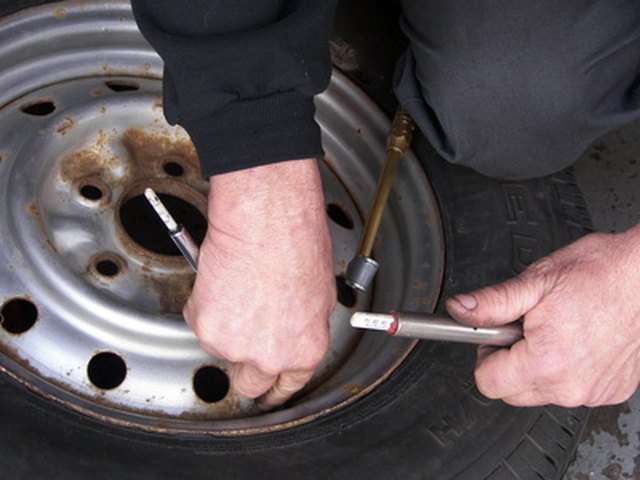 The XB-550/554 will take care of all of your farm tractor and large tire changing needs. If you need to change tires on vehicles like Skid Loaders and Grade-Alls, that have extremely thick side walls, you need the XB-554 HD-PRO.
The XB-550/554 will take care of all of your farm tractor and large tire changing needs. If you need to change tires on vehicles like Skid Loaders and Grade-Alls, that have extremely thick side walls, you need the XB-554 HD-PRO.
Will it work on my Tractor? Yes! The XB-550 HD was specifically designed to handle the big tires found on Farm Tractors, Military and Overland Vehicles, OTR and Industrial Vehicles, Semi-Tractor Trailers and Busses.
The XB-454 PRO was designed to handle extreme forces and repeated operation and abuse. Whether its the tight interference of race car tires, constant use in a production mechanic’s shop, or the critical functionality of a military application; the 454 PRO will hold up to any challenge you throw at it. The XB-454 PRO is proudly made in USA, entirely from 4140 chrome-moly steel that is hardened and tempered for ultimate strength.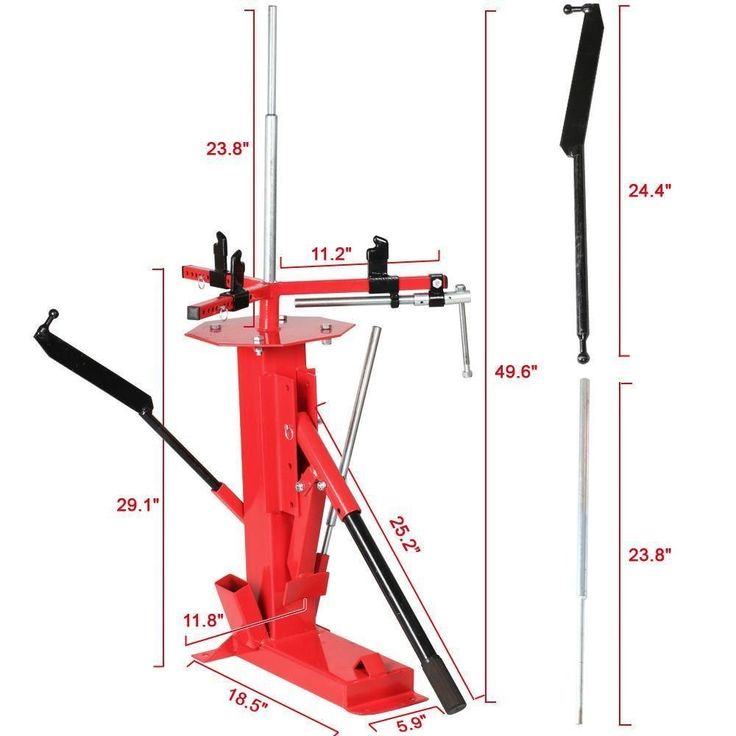 It is robotic welded for precision and accuracy.
It is robotic welded for precision and accuracy.
Will it work on my Race Car? Yes! The XB-454 PRO work on all kinds of race cars including: Sprint Cars, Quarter Midgets and Modified Stock Cars
CHANGE YOUR OWN TIRES …. AT HOME …. ON THE TRAIL …. ON THE ROAD …. AT RACE MEETS …. ANYWHEREThe “Poor Man’s” motorcycle tire bead breaker works like a charm!
Here it is: the world’s cheapest (and most effective) motorcycle tire bead breaker!
This method has not failed me yet; it works on bias or radial ply tires, old or new style rims, spoke or cast wheels.
The only materials that are needed for this device are a couple of pieces of 2×4 lumber: One 2×4 (or 2×3), about 7 or 8 feet long, and a smaller piece, maybe a foot long or so.
Place the wheel on the ground about 1 meter from a parked car. Make sure you lay a couple of pieces of 2×4 (or 2×3, as shown in photo left) under the rim to protect the brake disk rotor and rim from damage.
Slip the long 2×4 under the door sill of the car, and place the shorter piece on the edge of the tire, right up next to the rim.
You can get fancy if you’d like and put a hinge on the longer piece so that the shorter piece hangs down, but I find it more challenging (and easier) to simply hold the shorter piece and put a bit of pressure on it to keep it in place.
Place one foot over the opposite side of the rim, and lever away! Most tires will pop right off the rim with a bit o’ pressure, but you may find that some tires need a sharp push to get the bead to break.
In any case, this is the fastest, simplest and most effective method of bead breaking I’ve ever tried. It doesn’t make levering the tire on and off the rim any easier, but it sure makes breaking the bead a piece of cake. Forget about all those expensive dedicated bead breaking tools — you don’t need ’em!
Forget about all those expensive dedicated bead breaking tools — you don’t need ’em!
Please send comments to [email protected].
Comments are ordered from most recent to oldest.
See details on submitting comments.
From “D.W.B.” (August 2011): “Been doing this method of breaking motorcycle loose for years. Last week, it met its match and the 2×4 method failed to break the bead of a Bridgestone tire on a BMW K1200LT wheel. Had to break down and run it to a dealer with a hydraulic unit — he still had trouble. Ah well. Most of the time, this works just fine.”
From “D.S.” (4/10): “Hey, it works great. The only thing to add… I put a piece of duct tape on each side of the wheel bearings to keep dirt etc. out of them.”
From “M.W.” (11/09): “Just tried the method of breaking my motorcycle tire beads this weekend with the fulcrum boards and it worked just like explained.
No problem except I used a 4 X 4 instead of a 2 X 4 after reading about the 2 X 4 breaking and I used my truck trailer hitch as a pry point.
I had someone else put a foot on the rim so I could get control of the 4 X 4, a lighter 2 X 4 may be easier to handle by yourself.
The rear tire was a little more stubborn than the front but I just had to let the pressure stay on the bead for a while and it slowly broke then I just worked it around and it came right off.
Thanks for the tip.”
From “M.Y.” (9/09): “I had to check the date on your article to make sure it wasn’t published (April 1). After considerable effort I have 1 dented fender, 1 broken 2x4x8′ and one firmly mounted bead…
Seemed like a good idea though…”
From “E.C.” (4/09): “This is genius. I’ve built-a-thing-in-my-garage, C-clamped, almost-bought-the-harbor-freight-thing. Just moved to San Francisco [away from my garage] and used your piece-of-cake bead breaker idea to swap my own tires with a 2×4, two tire irons, and a gas station compressor. Very obvious in retrospect. Thanks! ”
Very obvious in retrospect. Thanks! ”
From “MNF” (2/09): “Wow it really worked. I was shocked!!!! THANKS”
From “M.D.”: “I just wanted to let you know how jazzed I am this morning. I have always changed my own tires on my street bikes, but breaking the bead has always been a hit-or-miss deal for me. I stumbled across, however, your article on the 2 x 4 bead breaker, and got to try it out last night. WOW!!! It worked exactly as advertised, and changing the tire on my PC800 took less than 20 minutes, from the time I put it on the center stand to putting it away.
And they say that pron is the only good thing on the internet…”
wBW Articles Info
Well, for starters, we ignore the advertising descriptions of a wonderful “hold” on any surface (“universality” of rubber is a myth, and a highway declared as such holds much worse than a special one in difficult conditions).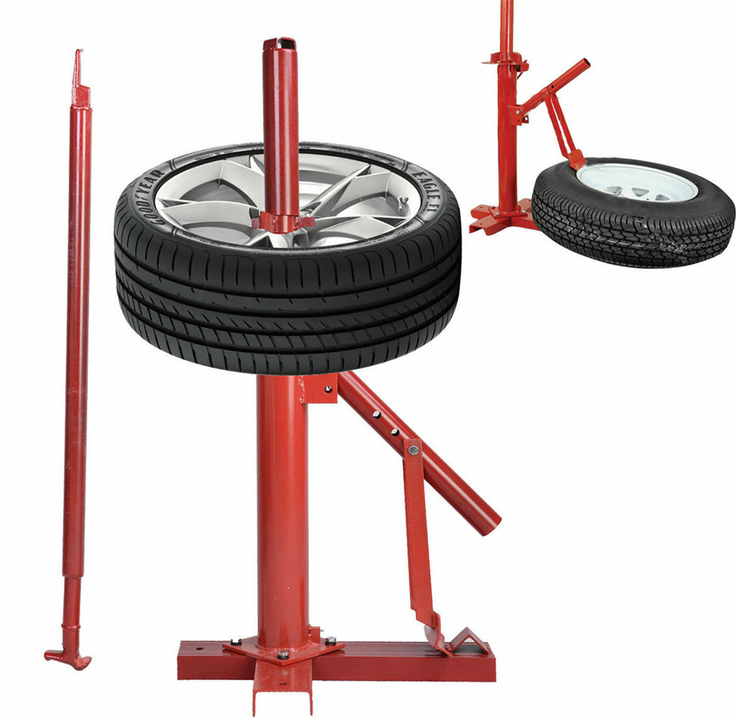 The principle of “taking the most expensive and popular one” is also not suitable for choosing motorcycle tires: if you choose the wrong type or profile, the same advantages can turn into a serious problem, therefore, we carefully study the characteristics. And here it is important that you know about the types, tire design, features of the choice of operation (oddly enough) and the timing of changing tires. Let's fill in the thematic gaps together.
The principle of “taking the most expensive and popular one” is also not suitable for choosing motorcycle tires: if you choose the wrong type or profile, the same advantages can turn into a serious problem, therefore, we carefully study the characteristics. And here it is important that you know about the types, tire design, features of the choice of operation (oddly enough) and the timing of changing tires. Let's fill in the thematic gaps together.
Each class of motorcycle has its own type of “shoe”, designed for efficient transmission of torque, better grip, stability when maneuvering in the conditions in which a particular bike is most of its life. Conventionally, motorcycle tires can be divided into road, off-road and racing. Within the class, tires are divided according to tasks: road, slick, rain, cross (endur), mud, studded, and dual-use. Diameter and width - depend on the class and dimensions of the equipment. By class, we will consider it.
In this category, most of the products are designed for limited use and have an extremely small resource - just one race or training session. Provides the best grip on asphalt. Their profile allows you to lay the bike almost parallel to the ground in the turn, however, only after warming up.
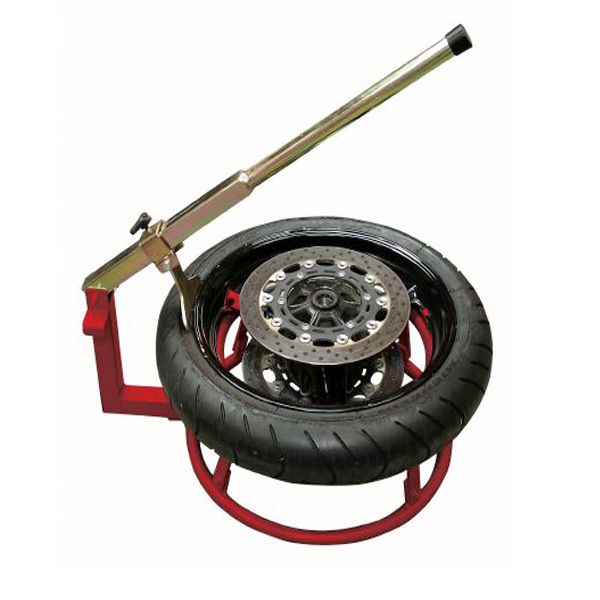
These motorcycles mostly "live" on the track, observing the primer only from a distance, from the height of the main road, so their "shoes" are designed for asphalt: the most durable, designed for the heavy weight of the motorcycle (passenger + luggage), and "all-weather".
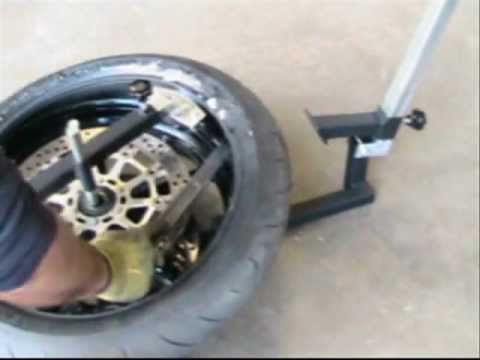 To the characteristics of sports - do not hold out.
To the characteristics of sports - do not hold out. The scatter of equipment in this category is very large - from "evil" tuned fifty dollars for mini-cross to light enduro for travel, so there are a lot of models here. You can combine them into classes according to their purpose: purely sports, amateur and rally:
You can combine them into classes according to their purpose: purely sports, amateur and rally:
For medium-sized classics, small-capacity, retro and custom motorcycles, various road tires are produced with a low semicircular profile, moderately developed tread, revealing working properties at temperatures below 80 about C.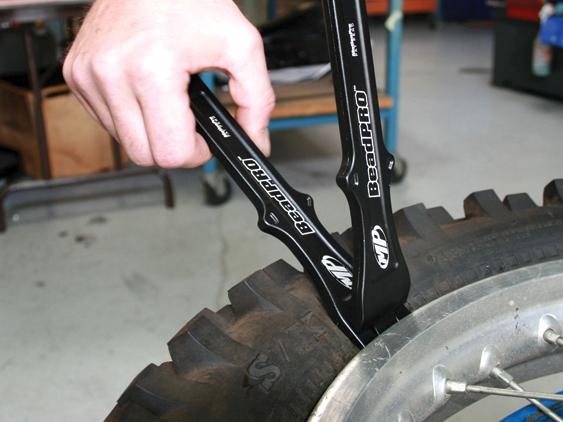 There are a lot of options, as well as specifics (all-season, rain, universal).
There are a lot of options, as well as specifics (all-season, rain, universal).
Motor tires are designed for high side loads. Its profile - even for the widest models - is more rounded than that of an automobile, consists of a working part responsible for traction, and a side part that “works” only when tilted in a turn. Parts not in contact with asphalt are also very important. It depends on them how much the tire will weigh, how much it will be washed under the weight of the bike, how long it will last.
Hidden part between the inner and outer layers of rubber, which gives rigidity and takes on the load. The structure of the cord is multi-layered. Steel wire, or threads made of polyamide, aramid fibers (Kevlar), or polyamide are arranged in dense rows either across the tire, or - intersect at an angle of 30–40 degrees in the direction of its rotation.
The edge of the tire, going inward, into the grooves of the edges of the rim, having an annular metal (internal) reinforcement.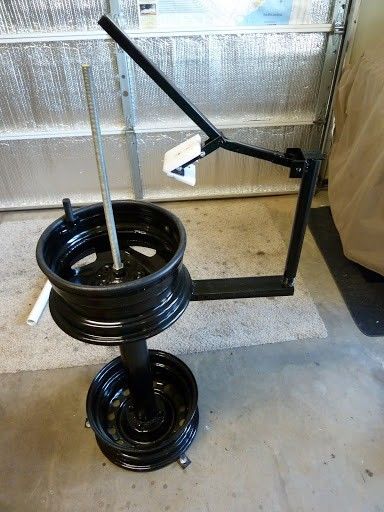 The reliability of its fixation in the rim determines the life of a motorcycle tire, and sometimes a motorcycle with a driver.
The reliability of its fixation in the rim determines the life of a motorcycle tire, and sometimes a motorcycle with a driver.
The working part, covered with an intricate pattern, the size, shape and depth of the grooves of which depend on the purpose of the product. A larger high tread is typical for off-road and cross-country motor tires, a lower, smooth one - for road and racing.
A zone connecting the tread and the bead that is not inferior to them in strength, but does not work with either the road surface or the rim. It is on it that “letters” are applied that reveal the properties and characteristics of the tire.
The three main indicators of motor rubber - width, profile (height), seat diameter (internal) - are measured in millimeters and inches. There are about a dozen markings adopted in different countries, but only four systems are widely used: Metric, Alpha, Standard (inch), Low profile (inch).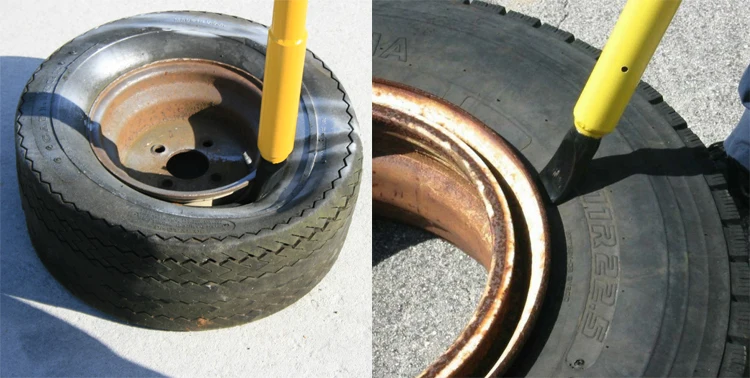 For each of them, corresponding tables are available. For our market, more characteristically - Metric.
For each of them, corresponding tables are available. For our market, more characteristically - Metric.
The name of the manufacturer (brand) and the name of the model are written in the largest letters on the product. The next in size is a "sausage" of numbers and Latin letters, indicating the width, height of the profile, the diameter of the rim for which the tire is intended, the weight limit per axle (rear / front), and the speed to which you can accelerate on this rubber. A little smaller - the country of origin, certificate, information about the material, design. Further, “small print” indicates no less important properties, which we will also consider separately.
I’ll immediately note the most common mistake in reading the rubber size index: the letter R is not a “radius”, as some motorcycle and car owners believe. This letter means "radial" model and indicates the radial direction of the inner carcass reinforcing layers of this tire.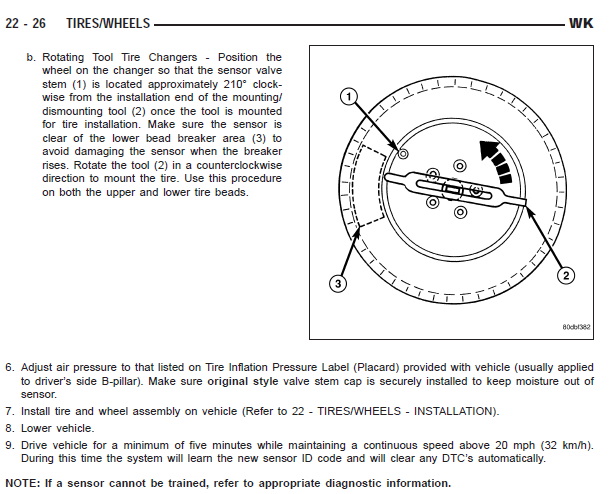 There are two main designs - radial - when the cord layers run across the tire, and diagonal - when they cross.
There are two main designs - radial - when the cord layers run across the tire, and diagonal - when they cross.
You don’t see the letter “R” in the index, but you see a gap, or “B” - it means the rubber is diagonal, and if “reinforced” or “reinf” is written nearby, it is also reinforced with an additional layer of cord.
"Sausage of letters and numbers", for example, 120/70 ZR17 (73W) TL, stands for:

The arrow with the words "wheel rotation" strictly regulates where the tire should rotate during operation. If there are letters ND (non directional) on board, it can be placed in any direction.
If the manufacturer clearly limits the installation location of the tire, he writes “Front” on it for the front or “Rear” for the rear. Without this marking, rubber can be placed on either side.
TL or tube less - as we have already deciphered earlier - tubeless. TT stands for tube type, or "suitable for camera use."
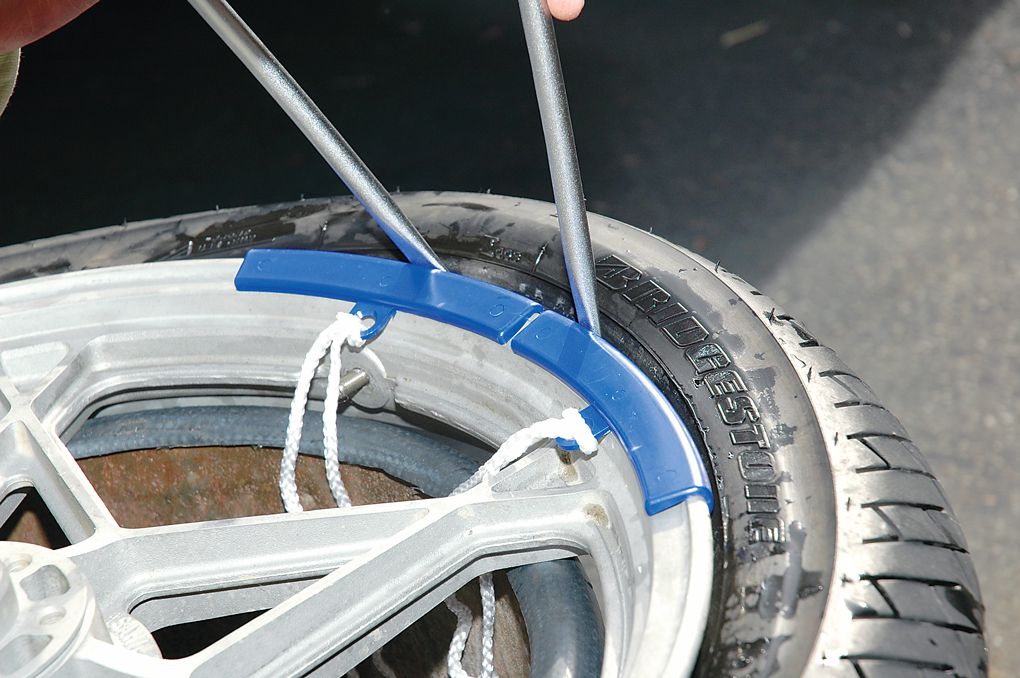
All manufacturers unanimously recommend “not wearing” rubber for more than five years, and if the equipment has been “shod” in it for ten years, even mothballed, urgently change the “bagels” without hesitation. A couple of decades ago, the resource of tires was regulated only by their external condition and the courage of the driver, but this was even before the mass “epidemic of planned obsolescence of goods”. Now, two years are taken into account in the calculation of the service life, and five years is the allowable storage period for rubber in a warehouse, as a result of which it should not be sold, but disposed of. The release date is marked with two two-digit numbers enclosed in a circle or oval. The first is the week number from the beginning of the year, the second is the year of production itself.
It is a common practice to buy lightly worn race slicks or cuts - only makes sense for training on the "ring" or karting track, but not on the DOP.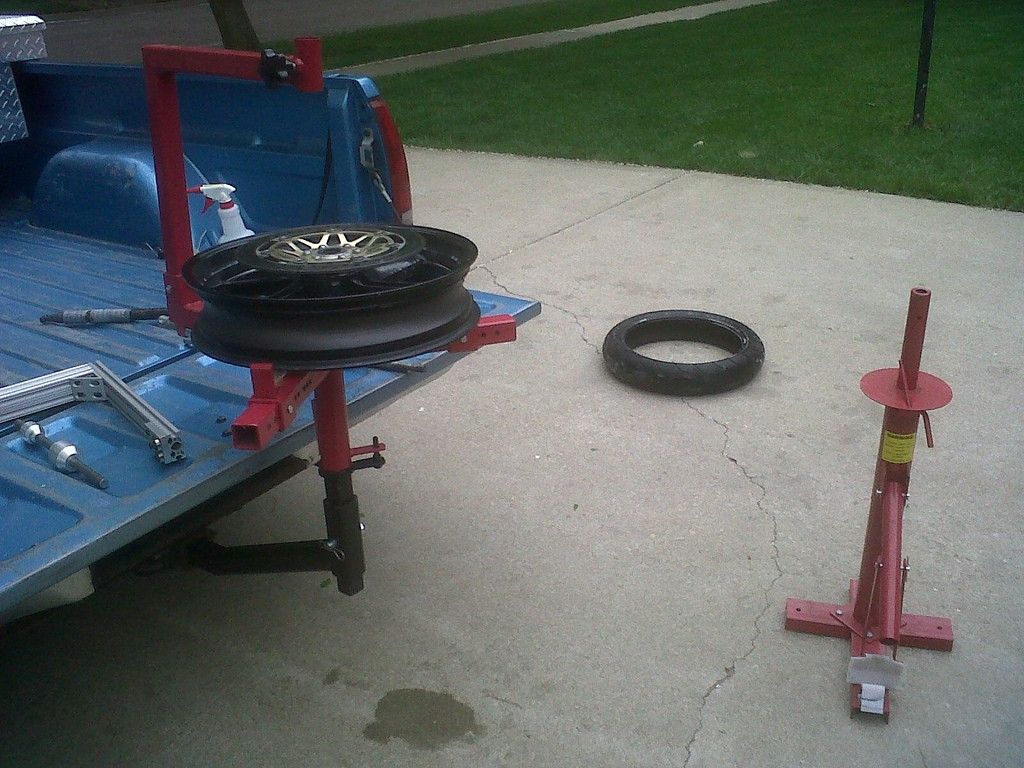 In addition to poor handling, longer stopping distances on slippery surfaces, and increased risk of blown tires at high speeds, riding old tires carries legal risks. When passing a technical inspection, a cracked or worn protector (hypothetically) can cause a refusal to issue a diagnostic card. In fact, this is the same malfunction as badly worn brake pads. Also, in the event of an accident, due to the unsatisfactory condition of the rubber, the insurance company may refuse to pay you, referring to your favorite excuse - speeding (based on the increased stopping distance).
In addition to poor handling, longer stopping distances on slippery surfaces, and increased risk of blown tires at high speeds, riding old tires carries legal risks. When passing a technical inspection, a cracked or worn protector (hypothetically) can cause a refusal to issue a diagnostic card. In fact, this is the same malfunction as badly worn brake pads. Also, in the event of an accident, due to the unsatisfactory condition of the rubber, the insurance company may refuse to pay you, referring to your favorite excuse - speeding (based on the increased stopping distance).
"From the factory" modern motorcycle tires are covered with a preservative silicone impregnation that prevents drying out during storage. It is slippery and penetrates deep into the pores of the rubber. Until you wipe it on the asphalt - do not count on a good "hold" and "sharp" brakes. It is not necessary to wash off the grease with gasoline or other solvent (it is useless), just ride measuredly for the first couple of hundred kilometers.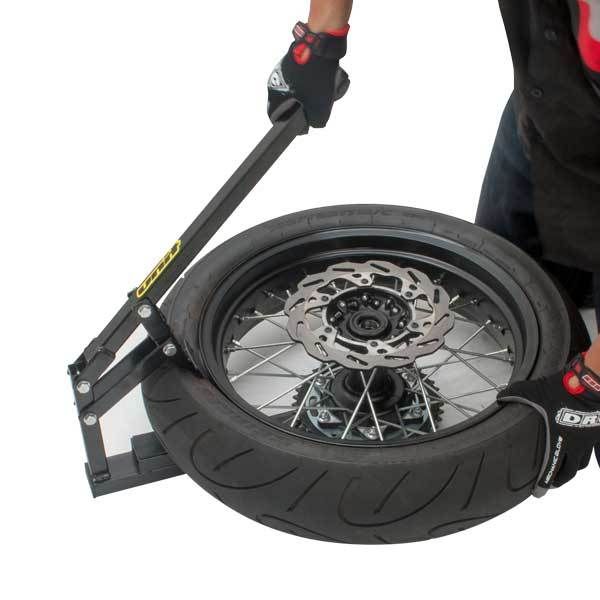 By the way, after long-term storage of used road motor rubber, it is also recommended to “run in” it in order to remove a layer of coarsened material from the surface.
By the way, after long-term storage of used road motor rubber, it is also recommended to “run in” it in order to remove a layer of coarsened material from the surface.
Even if you provide ideal storage conditions, motor rubber still ages over time, becoming covered with microcracks. If the "age" of tires has exceeded 10 years or more - do not buy them, despite their attractive appearance.
Signs of critical wear:

The principle of evaluating the residual depth of the tread grooves is now outdated - most manufacturers add an integrated tire wear indicator to the options, which is worth focusing on.
Let's start with what happens if you put a wider tire back without changing the "native" rim. This question worries many inexperienced motorcyclists who want to look more "sporty".
Firstly, you will not wait for the expected increase in traction due to the increased area of \u200b\u200b"support". Wider rubber, squeezed by the edges of the rim not in size, will tend to “up”, so the calculated wheel profile will be violated. It will be higher, respectively, the contact patch will not increase. Secondly, the controllability in corners will worsen, the speedometer will “lie”, the weight distribution will change due to the rear of the motorcycle raised.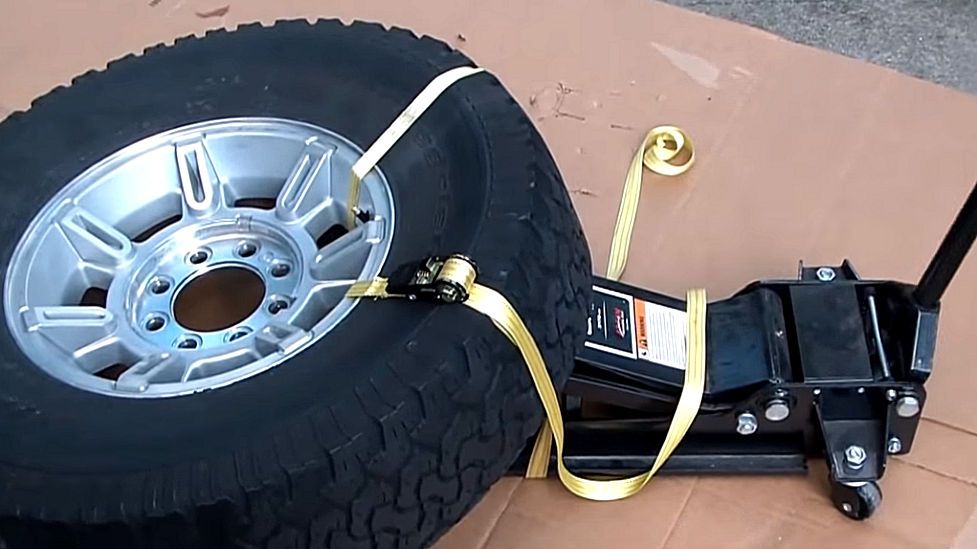
This is highly discouraged for most modern sportbikes that hit the track, but many classic models, nakeds and cruisers are often fitted from the factory with a combination of radial front and diagonal rear tires. Unlike the radial, the diagonal one is a little “softer”, allows for moderate overload, is sold a little cheaper, so why not?
The choice of how much to inflate the wheels to is a constant compromise between the loads on the rubber and its capabilities. On most motorcycles, the recommended pressure for each axle is indicated on a sticker (on the fork and swingarm), but this value is only relevant for the rubber model that was supplied from the factory. On a new model, look for a designation on the tire (next to the max load load) indicating the maximum allowable cold pressure. Do not take a tire if this value is lower than recommended for your motorcycle.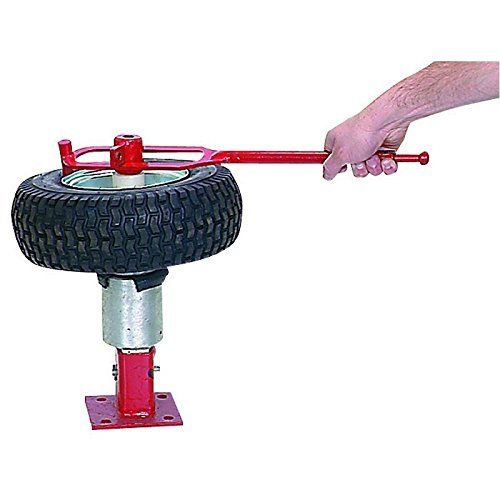
Let's say your bike has a sticker with the recommended 2.25 bar for the front and 2.5 bar for the rear wheel. If you ride mainly with a passenger, with luggage, making long “flights” along the track, your motorcycle weighs 200 or more kilograms, and its volume is close to a liter, keep the pressure in the rear wheel at least 2.8–3.0 bar, and in the front 2.5 bar. If you ride around the city, alone, with almost no luggage, and are not fond of “flights”, it would be optimal to set equal pressure in both wheels at 2.2 bar.
For lightly loaded medium-sized engines, the interval varies from 2.0 to 2.3 bar, and for slender "Chinese" 2.1 bar - in the front, 1.9 bar - in the rear cylinder (especially if the tires are also Chinese). The pressure in road tires must not be lowered below 1.9 so that the motorcycle does not start to “float” in corners or on bumps - this is dangerous.
The more we inflate the closed volume of the wheel, the more “round” it becomes and the smaller the area in contact with the asphalt.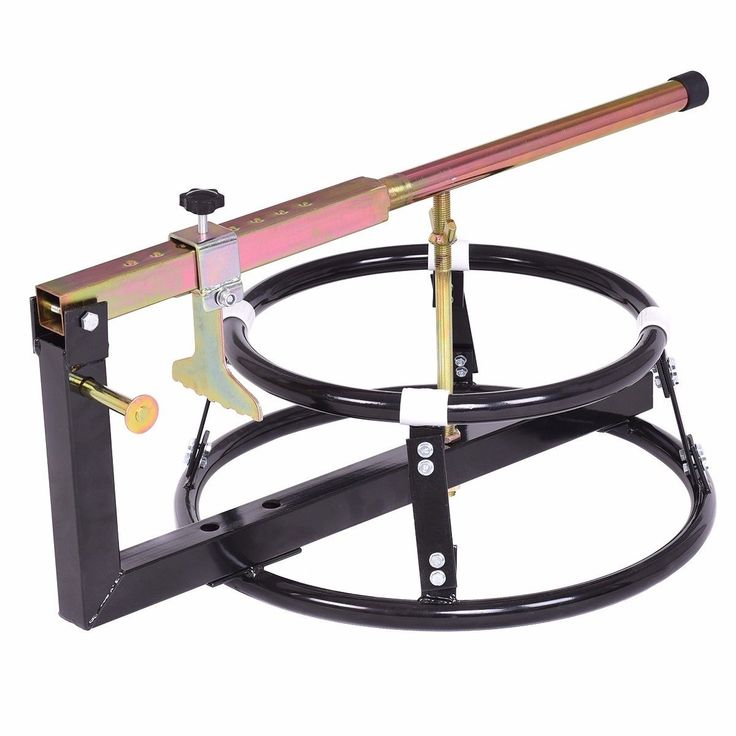 A larger contact patch means greater rolling resistance and accelerated tire wear, a smaller one means worse stability, lower braking and acceleration efficiency. Up to a certain point, these nuances are compensated by the tread, so on motocross and enduro bikes, the wheels can be lowered to 1.2 bar - front and 0.8 bar - rear. However, air is an unreliable business, therefore, in hard enduro and trials, a gel filler is now more often used, which allows maintaining a pressure of 0.4 and 0.9bar. Such a set will not live long, but this is a sport in which, as we remember, rubber consumption is not considered.
A larger contact patch means greater rolling resistance and accelerated tire wear, a smaller one means worse stability, lower braking and acceleration efficiency. Up to a certain point, these nuances are compensated by the tread, so on motocross and enduro bikes, the wheels can be lowered to 1.2 bar - front and 0.8 bar - rear. However, air is an unreliable business, therefore, in hard enduro and trials, a gel filler is now more often used, which allows maintaining a pressure of 0.4 and 0.9bar. Such a set will not live long, but this is a sport in which, as we remember, rubber consumption is not considered.
Definitely yes. The older the cylinder, the harder its surface and the lower the residual tread height, the worse the bike “holds” the road. Bald or improperly matched tires increase the braking distance, and can cause an unexpected “leaving” the track into a ditch. On an over-inflated tire, the fork or pendulum will “beat” hard, and on a flat tire, the motorcycle will become less predictable in corners and “gobble up” more gasoline than in a normal ride.
No, because their rims are not sealed and you simply cannot inflate the tire. Not all alloy wheels are suitable for tubeless, so always check what type of rubber was on the bike before. In addition, the hole in the rim designed for the camera nipple may not match the size of the new nipple.
Only if the damage to the wheel does not allow you to inflate the tire, and you still need to get to the “repair”. In all other cases, the idea is controversial. The inner surface of a tubeless rim is not designed for other rubber to constantly rub against it, creating additional heating, and the inner part of a tubeless rim may have protrusions that injure the chamber. It is possible to get a “beautiful” wheel by putting a tubeless tube on a spoked rim, but objectively, this will increase its weight (remember the unsprung masses), and reduce the life of the camera.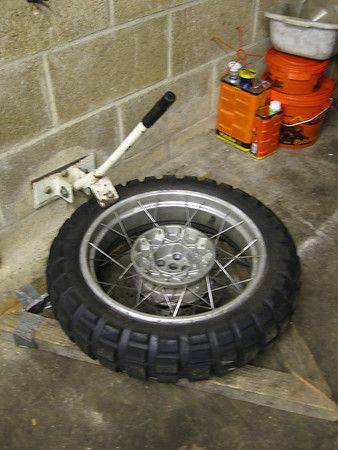 About when it frays to break - you will know already on a flat tire. You can repair a puncture of a tubeless tire without removing the wheel, but you will have to remove and patch the tube with its disassembly.
About when it frays to break - you will know already on a flat tire. You can repair a puncture of a tubeless tire without removing the wheel, but you will have to remove and patch the tube with its disassembly.
Undesirable. Even if it does not look worn yet, its resource is already less, from frequent “heating-cooling” cycles, it becomes rougher than new, frays or cracks faster. The old tube may not fully expand and fold if the new rubber has a lower profile (and internal volume) than the previous one.
If it belongs to the Racing Street or Street Legal class, this is a completely justified choice for the owner of a sport, street, naked or classic with claims to “aggressiveness”. In other cases, it is not recommended. Firstly, the use of racing slicks or cross-country tires is not allowed on the DOP. Secondly, sports tires are designed for intensive work with a certain warm-up. At competitions, before the race, they are warmed up in special covers, and then they are “given” one warm-up lap so that from the first seconds of the test race they can provide the bike with good contact with the asphalt (sticking).
At competitions, before the race, they are warmed up in special covers, and then they are “given” one warm-up lap so that from the first seconds of the test race they can provide the bike with good contact with the asphalt (sticking).
In the city, even if you ride aggressively, the slick simply does not have time to warm up to operating temperature (more than 80 about C). Or even before it does not heat up for the whole trip, given the ragged rhythm of traffic lights and possible "toffees". Accordingly, it will not give adequate grip when trying to “give a corner”, the wheels will be demolished during braking, and instead of an energetic start, the bike will “grind” on the spot.
Ideally, pre-washed, treated with a silicone spray, complete with a disk and in special cases. Naturally - in a dry, dark place with a constant temperature, away from fire, children and animals.
Change your shoes for the winter, or find and set aside good rubber in reserve - make sure that during storage it:

Few people can provide all these conditions, so remember at least the main thing: protect the motor rubber from drying out and deformation - do not hang it, but lay it horizontally, wrapped in waterproof fabric.
This is only the main part of the answers to popular questions about motorcycle tires, collected in one material. Without "deepening" in the topic - a little about everything. If any of your questions still remain unanswered - ask it in the comments, we will definitely analyze it.
Motorcycle tire technology has come a long way since the first donut was born over 100 years ago in the tire town of Breuberg. Exclusive reportage and video from the Metzeler factory.
Advertisement : vogerus.ru
MOTOR RACE.RU, May 1, 2016 - Robert Friedrich Metzeler founded his empire in Munich at the dawn of the 19th century industrial revolution. In 1871, his first factory was launched, producing the entire range of rubber products - from boots to bicycle tubes. Guessing what would become the most popular product in the rapidly changing 20th century, in 1906 Metzeler bet on the company's main product range, namely tires for motorcycles and cars.
In those days, tire "assembly" technologies were somewhat different from today's: rubber sheets were glued layer by layer on the base, then the tires were heated and the projector pattern was rolled by hand. The very process of vulcanization, that is, "baking" of a tire at a certain temperature, when irreversible chemical reactions begin to occur in the compound (rubber composition) - polymerization and soldering of layers into a homogeneous mass - has remained practically unchanged since then.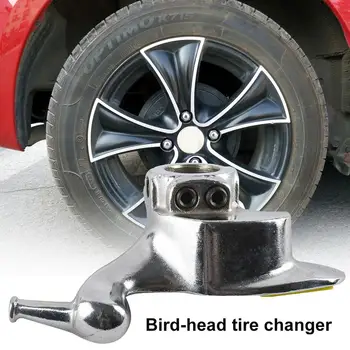 The technologies for applying the compound and the formula have changed.
The technologies for applying the compound and the formula have changed.
true monolithic rubber structure, greatly improve the strength and durability of tires. Metzeler tires helped set a world motorcycle speed record of 279.5 km/h on the Bonneville salt lake: others couldn't handle the heat. And yet, those tires were just a protective shell for the airbags.
In 1978, the world's first tubeless motorcycle tire was invented in Breuberg, then the factory found a way to significantly strengthen and lighten the carcass by replacing the steel cord with Kevlar. Metzeler tires began to win world championships in motorcycle racing, and then the Italian giant, the Pirelli group of companies, became interested in the plant. In 1986, the Bavarians officially became part of the group, becoming an independent division, retaining their own traditions and technologies, some of which Pirelli uses in its production today.
One of the most interesting technologies in Metzeler radial motorcycle tires is the ply and compound at "0°" (ie no intersections). The first road tire with this technology, the Metzeler Z4, hit the market 10 years ago. Since then, "bagels" in Breuberg have been baked according to the same recipe. How?
The first step in "assembling" a tire is to create a base. An elastic rubber "sausage" of the desired composition passes through a rotary press and turns into a tape, which is cut into blanks and wound on shafts with a variable diameter equal to the diameter of the future product - from 10 to 21 "respectively. The tape is looped and crimped on both sides with
The second step is to create the carcass.0278 The workpiece enters the machine, where a cord is wound around it in a rubber sheath. The base of the tire becomes a kind of spool for a thread (cord): the robot winds quickly and accurately, the cord lays down evenly, line by line, without forming any intersections and irregularities - this is the "0 °" (zero-degree) technology. The application of the carrier layer is carried out in the same way. The rubber thread of the desired compound, slightly heated and sticky, is wound over the cord onto the base in several layers.
The base of the tire becomes a kind of spool for a thread (cord): the robot winds quickly and accurately, the cord lays down evenly, line by line, without forming any intersections and irregularities - this is the "0 °" (zero-degree) technology. The application of the carrier layer is carried out in the same way. The rubber thread of the desired compound, slightly heated and sticky, is wound over the cord onto the base in several layers.
Breaking news
Big interview: Luca Marini remembers the 2022 MotoGP season with the VR46 Racing Team and the Ducati triumph VR46 Racing Team in 2020. The team founded by Valentino Rossi is among the best private teams in MotoGP today, and Marini is one step away from the first podium.
2022 MotoGP champion Pecco Bagnaia joins Valentino Rossi for the 100KM dei Campioni
The 2022 annual dirt-track endurance race at Rancho Valentino Rossi in Tavulla - 100KM dei Campioni will take place this coming weekend, November 25-26. The lists of participants have become known: MotoGP champion Francesco Bagnaia will join the huge band of VR46 Riders Academy graduates.
The lists of participants have become known: MotoGP champion Francesco Bagnaia will join the huge band of VR46 Riders Academy graduates.
Way for the young?.. How to succeed and become World Superbike champion at 38
On November 21, the day after he was officially declared World Superbike champion, Alvaro Bautista celebrated his 38th birthday. What led the Spaniard to victory and what links him to fellow MotoGP and Superbike Legend Carlos Cheka?
World Superbike 2022 season results: champions and prize-winners, statistics and interesting facts Giving Show. 2022 World Supersport Championship results, statistics and final figures0278
In Australia, the 2022 circuit racing season has ended at the Phillip Island Grand Prix Circuit. For the World Supersport class, it was historic, revolutionary, thanks to the brand new Technical Regulations and new players that influenced Yamaha's long-term hegemony.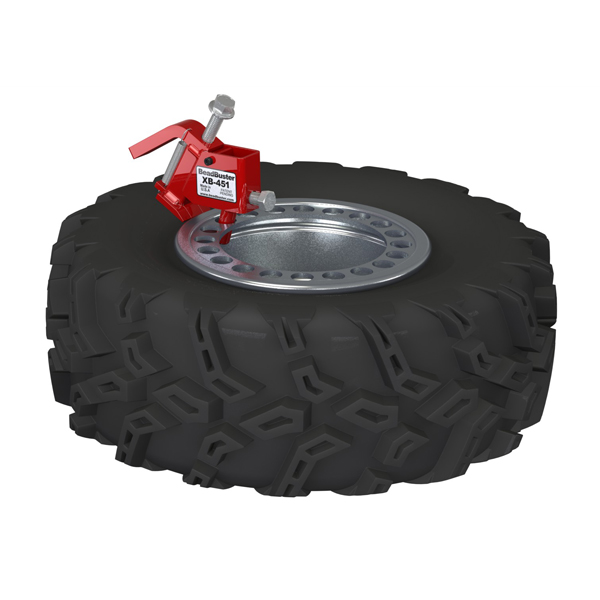 MOTOGONKI.RU sums up and offers interesting historical statistics.
MOTOGONKI.RU sums up and offers interesting historical statistics.
Enchanting WorldSBK 2022 finale: rain, sun, tire casino and... red flags in honor of Ducati!
Chill and light rain met the World Superbike pilots at the start of the final race of the 2022 season at Phillip Island. Given yesterday's chaos, no one could even imagine how the race would go: the track looked absolutely dry, but over a couple of sectors they waved “wet” flags. Rubber was put at random ... In these conditions, the final race of the Superbike World Championship took place.
Video - all the action of the final day of the 2022 WorldSBK season at Phillip Island: SP Race and Race 2
The final round 12 of the 2022 World Superbike Championship ended at the Phillip Island Grand-Prix Circuit in Australia. The weather conditions this weekend were inimitable: rain, sun, cold, heat, pit stops, red flags - everything was there! The show is not to be missed - watch the AUSWorldSBK races from start to finish: Superpole Qualifying, Run 1, Superpole Race and Run 2.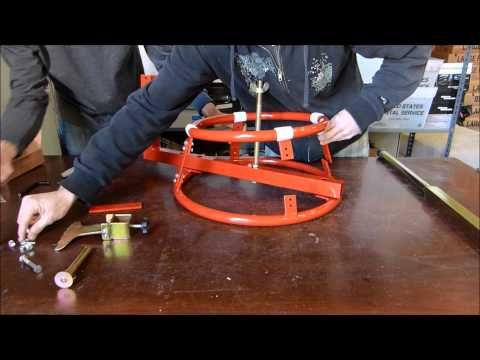
AUSWorldSBK - Battle with Pit Stops: Ray ends streak without a win, Ducati takes Triple Crown
The rain played a double trick on the World Superbike teams this Saturday: the day started on completely wet pavement, and at the start of Saturday's WSBK race, Phillip Island looked even wetter than it had been in the Supersport race; but when the race started, the sun and wind dried the track very quickly... the results of Saturday's AUSWorldSBK race, unpredictable Australia.
WorldSSP: Jari Montela wins tense duel with Caricasulo on rainy Phillip Island . Saturday's first race, the World Supersport race, however, turned out to be spectacular and quite tense, thanks to the passionate desire of the Kawasaki pilots to overcome a couple of Ducatis.
The third step, the final one, is directly "baking" : bagels are baked in special low-temperature ovens, the curing time and temperature are calculated by the computer and provide the final product with the desired properties.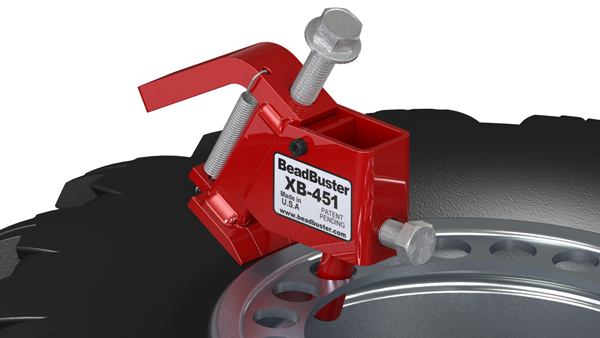
The vulcanization step is automated both at the Metzeler plant and at Pirelli. The only thing a person does is put the next blank on the machine, and then remove the finished tire from the line to send it to QC (Quality check). The machine aligns the position of the workpiece with the help of laser markers (that is, extremely accurately), and feeds it into a steel mold heated to 168 °, which covers the workpiece from the outside, and a pressure of 25 bar is injected into the product from the inside. For 13 minutes, polymerization and compounding takes place in the mold, so that at the end of the process we have a perfectly even, smooth and uniform tire with the pattern we need.
How long does it take to load a video? Click here!
Still steaming, freshly baked bagel Metzeler Roadtec 01 is on the table in front of us! It is not recommended to touch, because for a couple of minutes the temperature of the tire can reach 80-90 °, the polymerization process will be completed only when the product cools down to room temperature.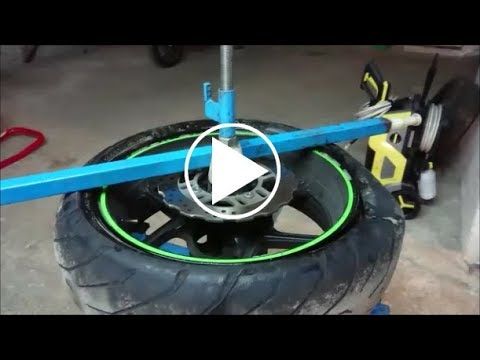 Then the tire can be bead on the disk!
Then the tire can be bead on the disk!
Steel molds, consisting of 8 sectors, are produced here, in a neighboring workshop, access to which is classified. Every week, a mold sector with a D.O.T. (batch production date) is changed so that we know exactly when our cylinder was produced and whether it was stale in the seller’s warehouse for an extra 7-8 months. After all, tires have a certain shelf life when their properties are optimal: 14-16 months after production, the compound begins to tan, gradually losing flexibility and grip. Ideally, if the purchased tire was produced no later than 4-6 months ago.
The difference between road and sports tires is that there is no slicking on the slick. The molds are smooth, and the "baking" process differs not only in time and temperature, but also in the pressure at which the vulcanization process takes place in the mold.